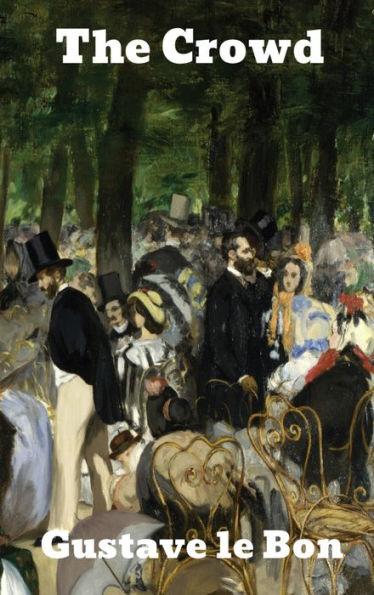

Hardcover
-
PICK UP IN STORECheck Availability at Nearby Stores
Available within 2 business hours
Related collections and offers
Overview
The Crowd: A Study of the Popular Mind is a classic and fascinating crowd psychology study authored by Gustave Le Bon and first published in 1895. In the book, Le Bon claims that there are several characteristics of crowd psychology: "impulsiveness, irritability, incapacity to reason, the absence of judgement of the critical spirit, the exaggeration of sentiments, and others..."
Crowd psychology, also known as mob psychology, is a branch of social psychology. Social psychologists have developed several theories for explaining the ways in which the psychology of a crowd differs from and interacts with that of the individuals within it. Major theorists in crowd psychology include Gustave Le Bon, Gabriel Tarde, Sigmund Freud, and Steve Reicher. This field relates to the behaviors and thought processes of both the individual crowd members and the crowd as an entity.
Crowd behavior is heavily influenced by the loss of responsibility of the individual and the impression of universality of behavior, both of which increase with the size of the crowd. The psychological study of crowd phenomena was documented decades prior to 1900 as European culture was imbued with thoughts of the fin de siècle. This "modern" urban culture perceived that they were living in a new and different age. They witnessed marvelous new inventions and experienced life in new ways. The population, now living in densely packed, industrialized cities, such as Milan and Paris, witnessed the development of the light bulb, radio, photography, moving-picture shows, the telegraph, the bicycle, the telephone, and the railroad system. They experienced a faster pace of life and viewed human life as segmented, so they designated each of these phases of life with a new name. They created new concepts like "the Adolescent," "Kindergarten," "the Vacation," "camping in Nature," "the 5-minute segment," and "Travel for the sake of pleasure" as a leisure class to describe these new ways of life. Likewise, the abstract concept of "the Crowd" grew as a new phenomenon simultaneously in Paris, France, and Milan, the largest city in the Kingdom of Italy. Legal reformers motivated by Darwin's evolutionary theory, particularly in the Kingdom of Italy, argued that the social and legal systems of Europe had been founded on antiquated notions of natural reason, or Christian morality, and ignored the irrevocable biology laws of human nature.

Product Details
| ISBN-13: | 9781774416426 |
|---|---|
| Publisher: | Binker North |
| Publication date: | 01/01/1900 |
| Pages: | 172 |
| Product dimensions: | 6.00(w) x 9.00(h) x 0.44(d) |
About the Author
Table of Contents
| Introduction: The Era of Crowds | ix | |
| Book I | The Mind of Crowds | |
| Chapter I | General Characteristics of Crowds--Psychological Law of Their Mental Unity | 1 |
| Chapter II | The Sentiments and Morality of Crowds | 10 |
| Chapter III | The Ideas, Reasoning Power, and Imagination of Crowds | 29 |
| Chapter IV | A Religious Shape Assumed by All the Convictions of Crowds | 38 |
| Book II | The Opinions and Beliefs of Crowds | |
| Chapter I | Remote Factors of the Opinions and Beliefs of Crowds | 43 |
| Chapter II | The Immediate Factors of the Opinions of Crowds | 60 |
| Chapter III | The Leaders of Crowds and Their Means of Persuasion | 72 |
| Chapter IV | Limitations of the Variability of the Beliefs and Opinions of Crowds | 89 |
| Book III | The Classification and Description of the Different Kinds of Crowds | |
| Chapter I | The Classification of Crowds | 100 |
| Chapter II | Crowds Termed Criminal Crowds | 104 |
| Chapter III | Criminal Juries | 108 |
| Chapter IV | Electoral Crowds | 114 |
| Chapter V | Parliamentary Assemblies | 123 |
